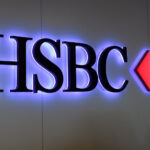The Reserve Bank of Australia kept interest rates steady on Tuesday, and said it remained committed to bringing down inflation, which it still saw as too high.
The RBA held its official cash rate at 4.35% for a seventh consecutive meeting, as widely expected.
The central bank said that while headline consumer price index inflation had eased, underlying inflation still remained “too high” by the bank’s standards.
Longer-term inflation expectations remained within the bank’s forecasts, and the RBA said it was important that this remain the case. But the RBA said that while inflation was expected to fall in the near-term on government support, it did not see prices returning “sustainably” into its target range until 2026.
The central bank did not provide any explicit comments on whether interest rates will increase in the coming months, stating that it remained vigilant to any more upside risks for inflation, and that it was not ruling “anything in or out.”
“The (rate-setting) Board remains resolute in its determination to return inflation to target and will do what is necessary to achieve that outcome,” the RBA said in a statement.
Recent data showed CPI inflation still remained elevated, while Australia’s job market marked outsized growth for five consecutive months.
While strength in the labor market does present some signs of resilience in the Australian economy, it also heralds sticky inflation in the near-term.
Governor Michele Bullock had warned repeatedly in recent months that sticky inflation could still invite more rate hikes from the central bank.
Analysts at ANZ expect the bank to keep rates steady until at least the first quarter of 2025, and that any plans to begin cutting rates are likely to be delayed by sticky inflation and labor market strength.
Monthly CPI data due on Wednesday is expected to show inflation fell within the RBA’s 2% to 3% target range. But underlying inflation is expected to have remained high.
The Australian dollar’s AUDUSD pair slightly increased gains after the RBA’s statement, while the ASX 200 stock index remained in negative territory.
The RBA is an outlier among its global peers in that it still holds a relatively hawkish outlook on rates, even as the Federal Reserve and other major central banks began cutting interest rates.




